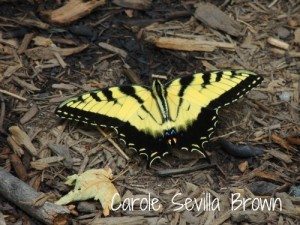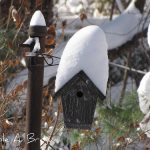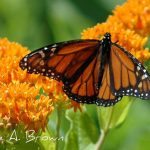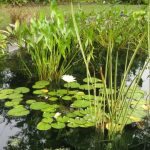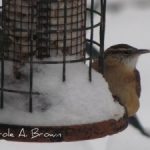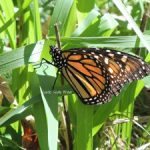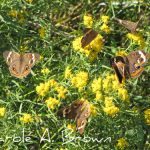When we think of butterfly gardens, we tend to think of lots of nectar plants for adult butterflies, but to have a successful garden for butterflies there is much more to it than that. You need to understand the Life Cycles of Butterflies so that you can plan for all of their needs.
The butterfly goes through a four-stage life cycle known as complete metamorphosis, which includes the egg, larva (caterpillar), pupa (chrysalis), and adult stages.
Egg: The female butterfly lays small, round eggs on the leaves of a host plant. The eggs hatch into larvae, or caterpillars, within a few days to several weeks, depending on the species.
Larva (Caterpillar): The caterpillar feeds voraciously on the leaves of the host plant, molting several times as it grows. Over several weeks, the caterpillar increases in size by several thousand times and prepares to form a pupa.
Pupa (Chrysalis): The caterpillar transforms into a pupa, or chrysalis, in which it undergoes metamorphosis into a butterfly. During this stage, the caterpillar’s body transforms into a butterfly’s wings, legs, and other body parts.
Adult: The adult butterfly emerges from the pupa, pumping fluid into its wings and allowing them to dry and harden. The butterfly feeds on nectar from flowers, mates, and repeats the cycle. Some species of butterflies may only live for a few days to several weeks, while others may live for several months.
This lifecycle allows the butterfly to go through significant changes and adaptations, allowing it to successfully transition from a vulnerable, plant-eating larva to a mobile, nectar-feeding adult capable of mating and laying eggs.
5 Steps to The Ultimate Butterfly Garden:
- Find which butterflies are in your area:
- Add host plants for caterpillars:
- Don’t forget trees and shrubs
- Mass plants for greatest impact
- Plan for 3 full seasons of bloom
To find out which butterflies are in your area, you can try the following methods:
Check local resources: Look for local field guides, naturalist groups, or conservation organizations that can provide information about the butterfly species in your area.
Visit a local butterfly garden or sanctuary: Visit a local butterfly garden or sanctuary to see what species are present and to get more information about them.
Online resources: Use online resources such as the North American Butterfly Association (NABA) website to find out which butterfly species are found in your area. They have a butterfly database that you can search by state or province to find a list of species.
Observe and document: Observe the butterflies in your area and keep a record of what you see. You can also take photographs to help identify the species.
Join a butterfly watching group: Join a local butterfly watching group, where you can learn from other butterfly enthusiasts and share your observations.
Some common host plants for caterpillars include:
Milkweeds (Asclepias species) – a favorite of Monarch caterpillars
Parsley, dill, fennel (Apiaceae family) – host to Black Swallowtail caterpillars
Brassica (mustard family) – host to Cabbage White and Mustard White caterpillars
Clover (Leguminosae family) – host to several species of Skippers and Hairstreaks
Violets (Violaceae family) – host to Fritillaries and Checkerspots
Willows (Salicaceae family) – host to several species of Moths and Butterflies
It’s important to note that some caterpillars can also feed on nectar from flowers and other sources of sugar. To provide food and habitat for caterpillars in your garden, you can grow a variety of native plants that cater to different species of butterflies and moths. You can also provide a shallow dish of water for caterpillars to drink from.
More From Ecosystem Gardening:
Submit your review | |

